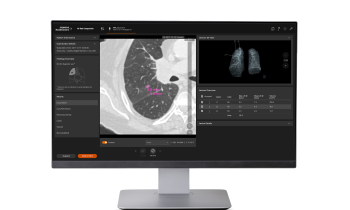Referral management and referral cooperation
‘New market dynamics’ in healthcare, with characteristics such as crowding out, internationalisation of medical services, increasing transparency of services due to the media, and price-oriented reimbursement systems, enforce quality promoting and cost-reducing labour divisions as well as cooperation of all players in healthcare provision. Professor Wilfried von Eiff, from the Centre for Hospital Management, University of Munster, Germany, outlines approaches to cope with these demands.

Referral cooperation is of particular strategic importance to hospitals and the referring doctors are important ‘anchors in the market’. They ensure continuous demand from patients and ensure their quality care after discharge. Around 70% of patients follow their GPs’ referral recommendation. 94% of patients use their GP as a source of information on issues of medical quality (37% frequently, 57% occasionally), 85% ask their specialists (19% frequently, 66% occasionally). However, specialist doctors are also important referrers: 74% of patients ask their GP for immediate referral to a private specialist when a diagnosis is unclear.
Referral management represents a special strategy to sustain development and safeguard a hospital’s referral potential. Its objective is to attract and work in the long term with those doctors who can be classed as ‘successful referrers’ (graph 1) i.e. who:
• look after a large number of cases
• have medically interesting and economically attractive case structures
• enjoy above average popularity (friendliness, helpfulness, understanding, etc.) among patients
• are competent
• are interested in developing their own patient market by providing innovative services.
Referral management corresponds with medical care (social empathy), quality of accommodation and care as well as service. After a hospital stay, a patient who complains to his GP about one of those aspects counteracts any strategy of direct referral care. A quickly despatched doctor’s letter does not make up for unfriendly care or the need for surgical revision (graph 2). Referral management and referral marketing are part of the marketing strategy of the hospital and are design objects as well as design elements of the marketing mix. The view of the referring doctor Successful referral management rests on a win-win basis. In as much as the hospital is very interested in working with medically effective and economically attractive referrers in the longterm, a referring doctor will always be aiming to cooperate with those hospitals that provide added value for his surgery and his patients.
Doctors particularly value these service characteristics from cooperating hospitals:
• Outstanding medicine with the option of obtaining second opinions
• Quality of hygiene management, particularly regarding infection risk (norovirus, Clostridium difficile, MRSA)
• Participation in the know-how and development of experience through training, observation and residencyand integration into knowledge management (specialist article matching on ICD basis, case-related article research, information on adverse drug reactions, aftercare guidelines etc.)
• Smooth, non-instrusive organisation of patient care, particularly regarding admission and discharge management through a case manager,around the clock availability of current patient status information, joint development of treatment plans for aftercare. This includes the availability of the diagnosis upon discharge or no later than 24 hrs later.
• Quality and safety of pharmacotherapy (microbiology for antibiotics treatment, presence of a clinical pharmacist in the treatment team).
• Room design and equipment that ensures privacy and confidential doctor/ patient talks.
• Real-time, direct referral of the patient back to the referring doctor. The more effective and error-free these interfaces work, the more qualified the medical result, the better the patient outcome and higher the satisfaction among patients and their referring doctors.
Three important aspects to the interface between out- and in-patient care need particular organisational solutions:
• A consistent point of contact for the referring doctor.
• Medication management to ensure continuous, stratified drug therapy.
• Real-time availability of medically relevant information for follow-on treatment by the referring doctor.
Summary
Referring doctors are the ‘anchors’ for hospitals in the market for medical services.
Referral management
• should be a central, strategic hospital task, to ensure its long term, economically stable survival
• needs to be strategically developed and carried out by an organisationally established, professionally designed specialist function with knowledge of medical processes. It should not be ‘caretaker’ management
• needs to be hospital- departmentand people-specific, i.e. every consultant and specialist registrar needs to carry out referral management based on the strategic requirements
• can be achieved through different cooperation models: Integrated care, the portal-hospital concept, gatekeeptreatmenter-concept, community health centres and centres of competency.
The concepts aim to achieve the best possible, medically-appropriate patient care at sustainable cost. Referral controlling helps to monitor the qualitative and financial effects and to derive measures for referral care.
Further details: von.eiff@uni-muenster.de
31.08.2011










